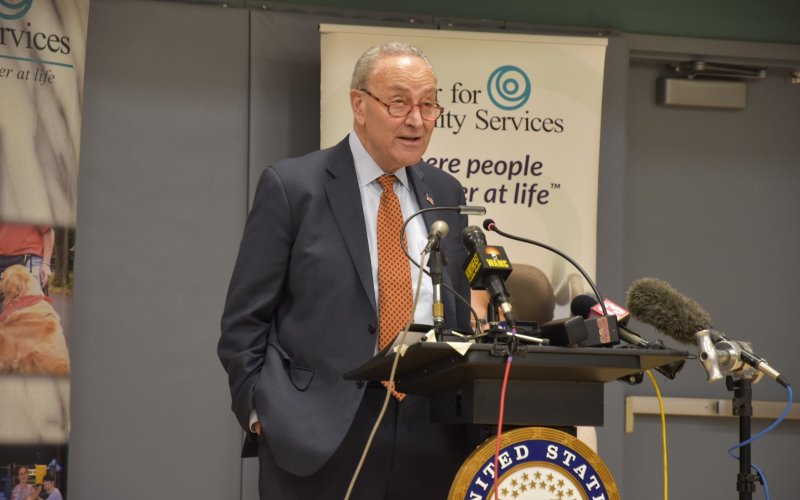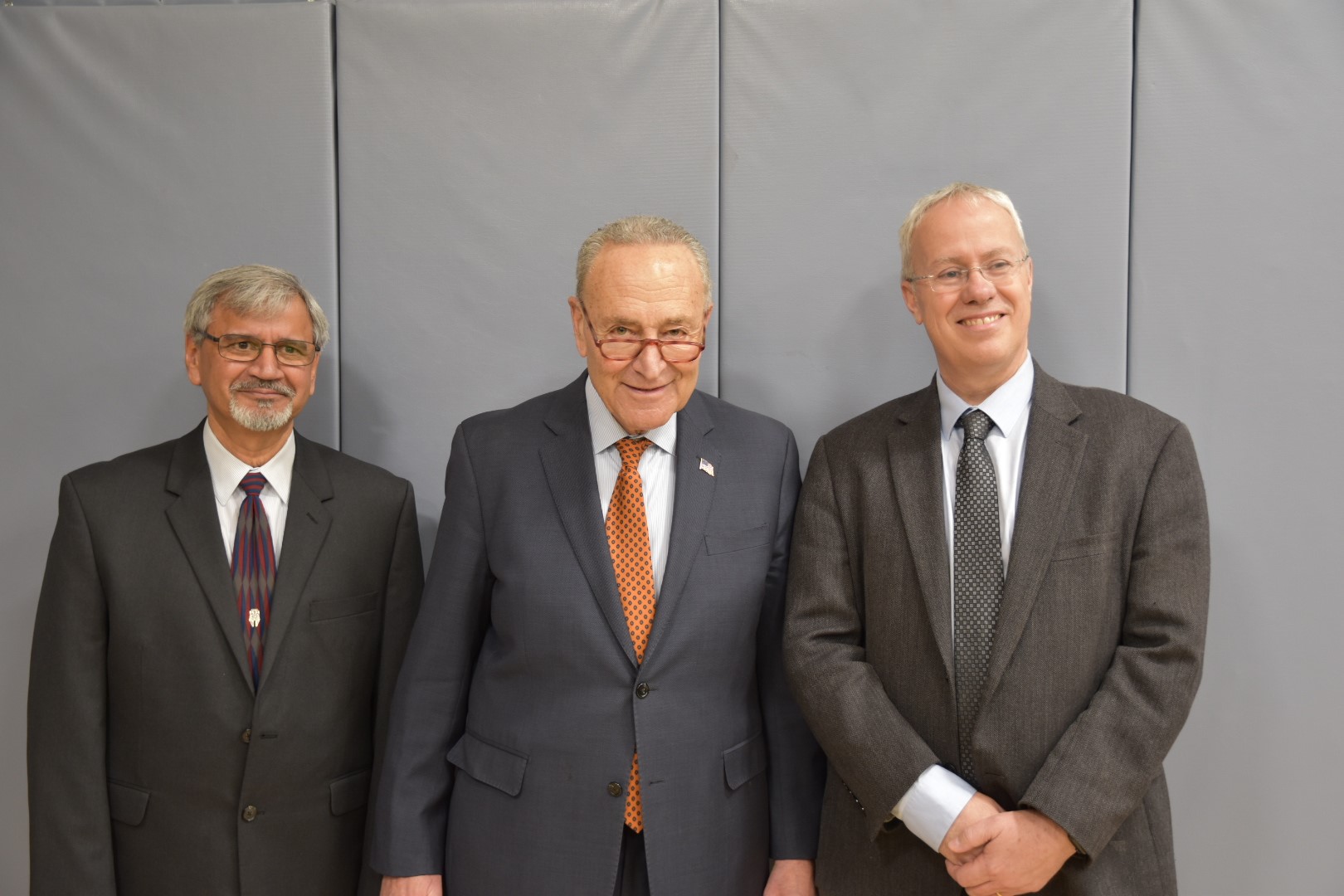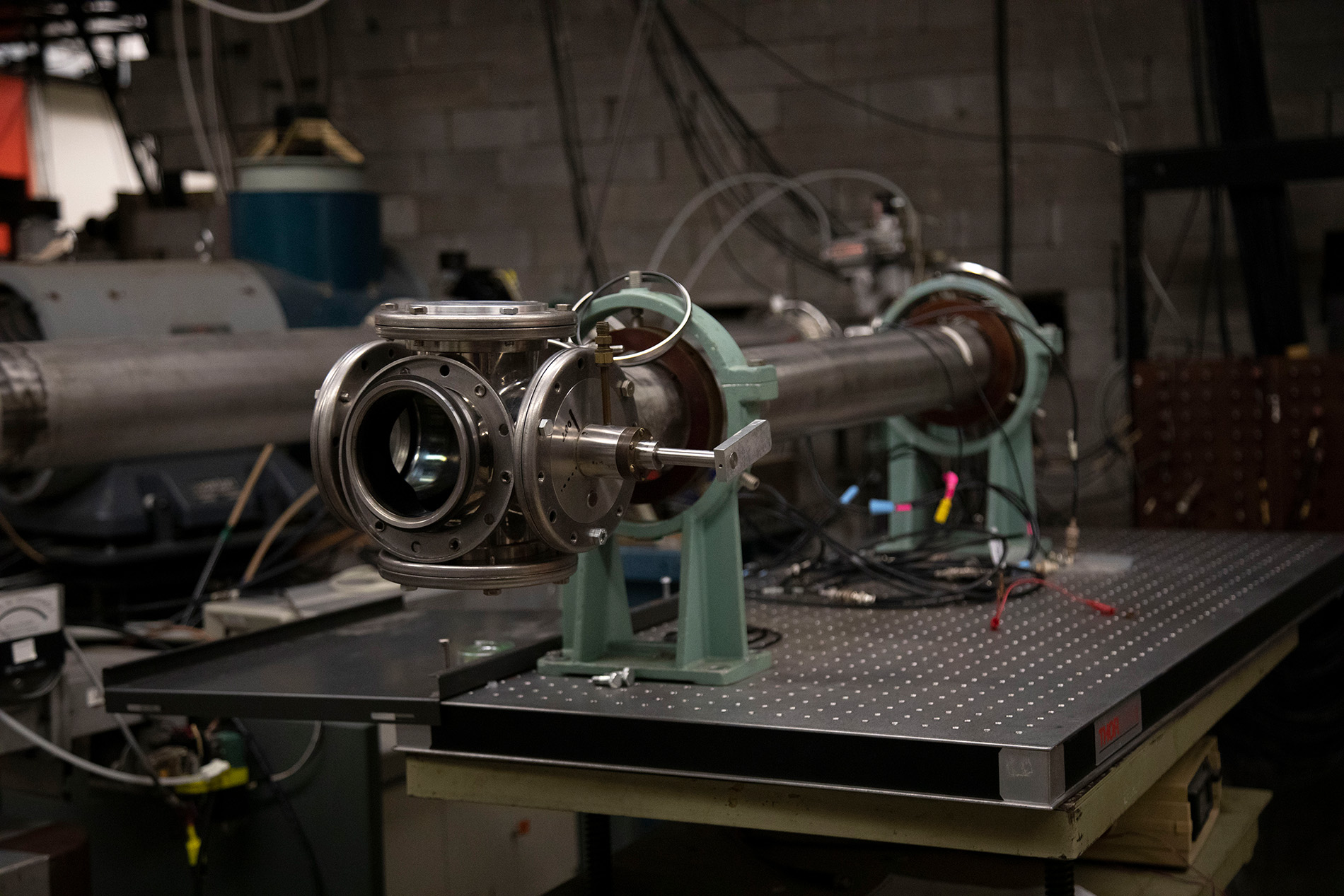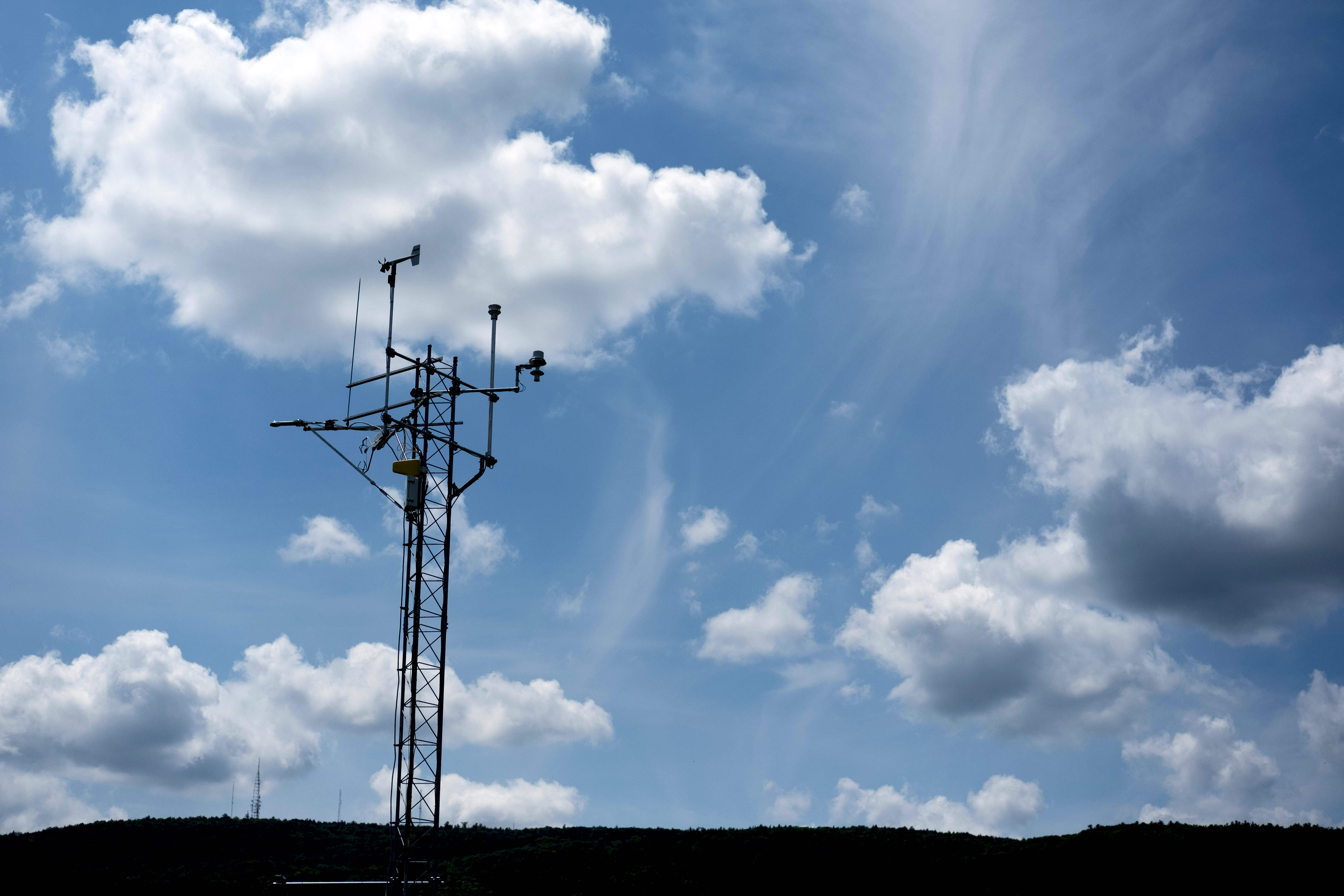UAlbany Researchers at the NYS Mesonet, Ion Beam Lab Receive $1.87 Million Federal Boost

By Mike Nolan
ALBANY, N.Y. (Jan. 17, 2023) — Researchers at the University at Albany are once again receiving a major boost in the federal budget passed last month.
U.S. Sens. Chuck Schumer and Kirsten Gillibrand recently announced $1.87 million to UAlbany to fund the expansion of a project leveraging data from a specialized New York State Mesonet weather network and improvements to the Ion Beam Laboratory, home to some of the best university-based high-energy particle instrumentation in the world.
The funding is among $22 million secured for Capital Region projects through the 2023 bipartisan omnibus spending package.

“New York is lucky to have representatives in Congress who truly understand the power of science to improve society and help us live more sustainably,” said University at Albany President Havidán Rodríguez. “With this funding, UAlbany researchers can leverage NYS Mesonet data to optimize renewable energy generation in New York and use the University’s particle accelerators to provide critical new insights on semiconductor design, how solar winds impact electronic devices in space and how to improve the efficiency of electric car batteries.”
“This new funding will expand our ability to conduct important research leading to the development of next generation of computer chips and reliable weather prediction, both of which impact society,” added UAlbany Vice President for Research and Economic Development Kesh Kesavadas. “Both fields also have significant overlap with UAlbany’s rapidly growing portfolio of artificial intelligence research."
Ion Beam Lab
Buried deep below the ground between the Academic Podium and the State Quad parking lot on UAlbany’s Uptown Campus, the Ion Beam Laboratory (IBL) is unmatched by any other similar university-based laboratory in the U.S.

Inside it, scientists use two particle accelerators to probe different kinds of materials with ionized particle beams to learn more about their fundamental properties and how those properties can be tailored. This knowledge plays an important role in the design of advanced microelectronic devices and chips that are essential to high-performance computing, artificial intelligence, and quantum computing.
The new federal support of $520,000 will be used to modernize some of the IBL’s instruments and control systems and add a new low-energy accelerator to simulate solar wind to study its impact on microelectronic components in satellites and space vehicles. It also will help researchers study the use of neutron beams in cancer therapy and ion migration in electric vehicle batteries to improve their efficiency and lifespan.
“The Ion Beam Lab is a critical facility that will help advance New York’s efforts to make Upstate a major center for modern electronics and microchip manufacturing,” said Satyendra Kumar, UAlbany’s associate vice president for research and director of the Ion Beam Lab. “This new investment will not only modernize the IBL’s research and equipment, but also support the next generation of scientists in the Capital Region and New York through the IBL’s training programs for our students and researchers at other regional educational and industry partners.”
The VERTEX Project
The New York State Mesonet will receive $1.35 million to expand the Empire State VERTEX (Vertical Sensing Evaluation Regional Testbed Experiment) project, which is leveraging data from scanning Doppler LiDAR and a microwave radiometer at each of the Mesonet’s 17 profiler sites located across the state. This data is used to better understand the atmospheric boundary layer, the lowest part of the troposphere that is directly influenced by Earth's surface.

The profiler network takes new measurements every five minutes, sending critical data about temperature, wind speed and direction and moisture content in real time back to NYS Mesonet headquarters on UAlbany’s campus. The testbed project is designed to help the National Weather Service better understand how to incorporate profiler data into its forecasting models nationwide.
This new funding, which adds to $900,000 secured in last year’s federal budget, will also be used to better understand how profiler data can inform the deployment of new renewable energy generation facilities (both onshore and offshore wind and solar) and provide more accurate forecasts of production and power demand.
It will also help provide additional data for meteorologists and emergency managers in New York, who have traditionally relied on boundary layer measurements from the National Weather Service’s twice-daily weather balloon launches at three locations across the state. The NYS Mesonet’s profiler network offers nearly 5,000 daily observations.
“Our first-in-the-nation profiler network has the potential to help mitigate the most severe impacts of climate change for New Yorkers, including improving weather resiliency, aiding air pollution forecasts and helping New York reach its renewable energy goals,” said Chris Thorncroft, director of UAlbany’s Atmospheric Sciences Research Center and NYS Mesonet. “We are thankful to our federal representatives for working tirelessly to secure this funding.”




